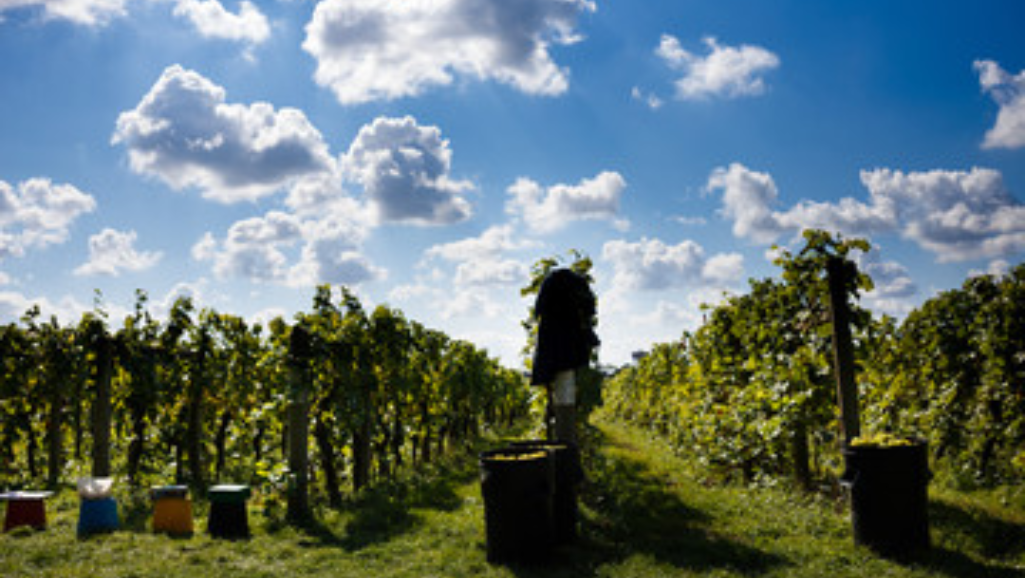Have you ever wondered why vineyards are often found on hills? Well, there are several reasons why this is the case. One of the main factors is the soil drainage and water management that hills provide. Additionally, the elevated position allows for increased sunlight exposure, which is crucial for grape ripening. Hills also offer natural protection from frost and ensure optimal air circulation. All of these factors contribute to enhanced grape quality and flavor.
Contents
Soil Drainage and Water Management
To ensure proper soil drainage and effective water management, you should consider planting vineyards on hills. This is because hills provide natural slopes that facilitate water runoff, preventing waterlogging and ensuring optimal soil drainage. Additionally, hills allow for better water distribution through irrigation techniques such as contour farming, terracing, and drip irrigation.
Contour farming involves creating rows along the contour lines of the hill, which helps to slow down water flow and reduce erosion. This technique allows water to infiltrate the soil more effectively, promoting healthy root growth and minimizing water wastage. Terracing, on the other hand, involves building steps on the hillside, creating flat areas for vine planting. This technique not only improves water drainage but also helps to prevent soil erosion, making it a sustainable choice for vineyard cultivation.
Drip irrigation, a popular method in vineyard sustainability, involves delivering water directly to the plant roots through a system of tubes and emitters. By placing the irrigation system strategically on the hill, water can be efficiently distributed to the vines, minimizing evaporation and maximizing water use efficiency.
Increased Sunlight Exposure
For optimal grape ripening and vine health, planting vineyards on hills provides increased sunlight exposure. Hillside microclimates and slope orientation play a crucial role in maximizing the amount of sunlight that reaches the vines.
Hillside microclimates are unique weather conditions found on slopes that differ from those in the surrounding areas. These microclimates are influenced by several factors, including slope orientation, elevation, and the angle of the sun. When vineyards are planted on hills, they benefit from these microclimates, which can create warmer and sunnier conditions compared to flat land vineyards.
Slope orientation is another important consideration when it comes to sunlight exposure. The angle at which the slope faces determines the amount and intensity of sunlight that the vines receive. South-facing slopes, for example, tend to receive more sunlight throughout the day, while north-facing slopes receive less direct sunlight. By carefully selecting the slope orientation, vineyard owners can ensure that the vines receive the optimal amount of sunlight for photosynthesis and grape ripening.
To illustrate the significance of sunlight exposure in vineyard locations, consider the following table:
| Vineyard Location | Sunlight Exposure |
|---|---|
| Hillside | High |
| Flat land | Moderate |
| Valley | Low |
| Mountain | Variable |
As you can see, vineyards on hillsides offer the highest level of sunlight exposure, which is essential for producing high-quality grapes and ensuring the overall health of the vines.
Natural Protection From Frost
Planting vineyards on hills not only provides increased sunlight exposure but also offers natural protection from frost. This is a crucial factor to consider when selecting a vineyard location. Here’s why:
- Peace of Mind: By planting vineyards on hills, winemakers can sleep peacefully at night, knowing that their precious grapevines are protected from frost. Frost prevention is essential as it can cause significant damage to the delicate vines, leading to reduced yields and lower-quality grapes. With the natural protection offered by the hills, winemakers can breathe a sigh of relief, knowing that their investment is safeguarded.
- Consistency and Reliability: The natural protection from frost provided by hills ensures a more consistent and reliable grape harvest. Frost events can be unpredictable and devastating, causing significant fluctuations in grape production. By choosing a vineyard location on hills, winemakers can reduce the risk of frost damage, ensuring a more stable and predictable grape yield year after year.
- Quality Assurance: The natural protection from frost offered by hills contributes to the overall quality of the grapes and, consequently, the wines produced. Without the threat of frost, grapevines can thrive, allowing for optimal ripening and flavor development. This results in wines that are of superior quality and reflect the unique characteristics of the terroir.
Optimal Air Circulation
You can achieve optimal air circulation in vineyards on hills. The layout of the vineyard plays a crucial role in maximizing the flow of air throughout the vines. By strategically positioning the vines on the slopes, you can take advantage of the wind patterns and ensure that the air circulates effectively.
Hills create natural channels for wind to flow through, which helps to disperse any stagnant air and prevent the buildup of moisture and disease. The wind patterns on hills tend to be more consistent and stronger compared to flat areas, allowing for better air movement within the vineyard. This helps to reduce the risk of fungal diseases and promotes healthier grapevines.
When planning the layout of a vineyard on a hill, it is important to consider the direction of prevailing winds. By aligning the rows of vines perpendicular to the prevailing winds, you can maximize the airflow between the rows. This allows the wind to pass through the vineyard, reducing the chances of humid conditions that can lead to fungal infections.
In addition to the layout, the spacing between the vines also plays a role in optimizing air circulation. Ample space between the rows and between the individual vines allows for better air movement, ensuring that each vine receives the necessary ventilation to thrive.
Enhanced Grape Quality and Flavor
To further improve the quality and flavor of the grapes, it is essential to harness the advantages of vineyards on hills. The vineyard location plays a crucial role in enhancing grape quality and flavor. Here are three reasons why vineyards on hills can make a significant difference:
- Sun exposure: Hillsides offer better sun exposure due to the angle and orientation of the slopes. The grapes receive more direct sunlight, allowing them to ripen more evenly and develop a greater concentration of sugars, flavors, and aromas. This results in richer, more complex wines that tantalize your taste buds.
- Drainage: Hillsides naturally provide better drainage for the vineyard. Excess water can drain away more easily, preventing the roots from becoming waterlogged. This promotes healthy vine growth and prevents diseases caused by excessive moisture. As a result, the grapes grown on hillsides are less prone to rot and have a higher natural acidity, adding a crisp and refreshing character to the wine.
- Vineyard management: Managing a vineyard on hills requires extra effort and attention, which can lead to better grape quality. The steep slopes demand manual labor, ensuring meticulous care and attention to detail. This hands-on approach allows vineyard managers to closely monitor and control every aspect of grape production, resulting in grapes of exceptional quality and flavor.
Embracing the advantages of vineyards on hills not only enhances the quality and flavor of the grapes, but it also adds a touch of artistry and craftsmanship to the winemaking process. So, the next time you raise a glass of wine, remember the labor of love that went into cultivating those grapes on the hills.




